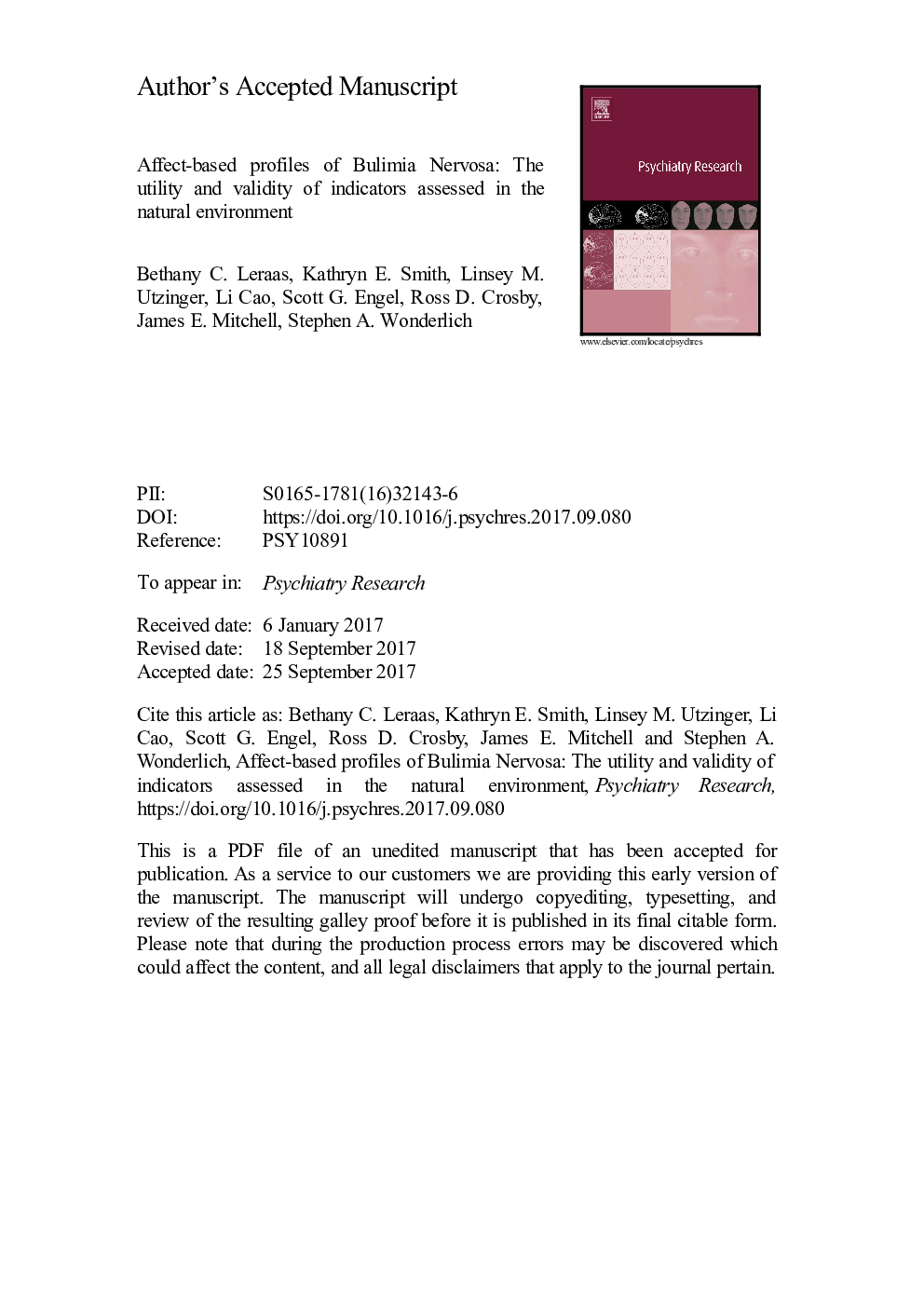| Article ID | Journal | Published Year | Pages | File Type |
|---|---|---|---|---|
| 6811932 | Psychiatry Research | 2018 | 27 Pages |
Abstract
Theoretical conceptualizations of bulimia nervosa (BN) emphasize the role of emotion dysregulation in the development and maintenance of symptoms, which has been supported by ecological momentary assessment studies. Given the importance of affective disturbances in BN, this study aimed to classify a sample of adult women with BN (N = 130) based on primarily momentary affective indicators, including negative and positive affect, negative and positive affective lability, and depression. Participants completed baseline assessments followed by a two-week ecological momentary assessment protocol. Latent profile analysis revealed four groups: (1) a “stable normal” group characterized by low affective lability and intensity; (2) a “stable depressed” group characterized by low affective lability and higher affect intensity; (3) an “unstable normal” group characterized by higher affective lability but lower affect intensity; and (4) an “unstable depressed” group characterized by higher affective lability and intensity. The stable depressed group evidenced the highest levels of eating psychopathology, borderline personality traits, and childhood trauma history, while the stable normal group generally evidenced the lowest levels of psychopathology. The findings demonstrate significant heterogeneity in the topography of affect experienced by individuals with BN, and suggest that chronic, intense negative affect may be particularly important to address in treatment.
Keywords
Related Topics
Life Sciences
Neuroscience
Biological Psychiatry
Authors
Bethany C. Leraas, Kathryn E. Smith, Linsey M. Utzinger, Li Cao, Scott G. Engel, Ross D. Crosby, James E. Mitchell, Stephen A. Wonderlich,
